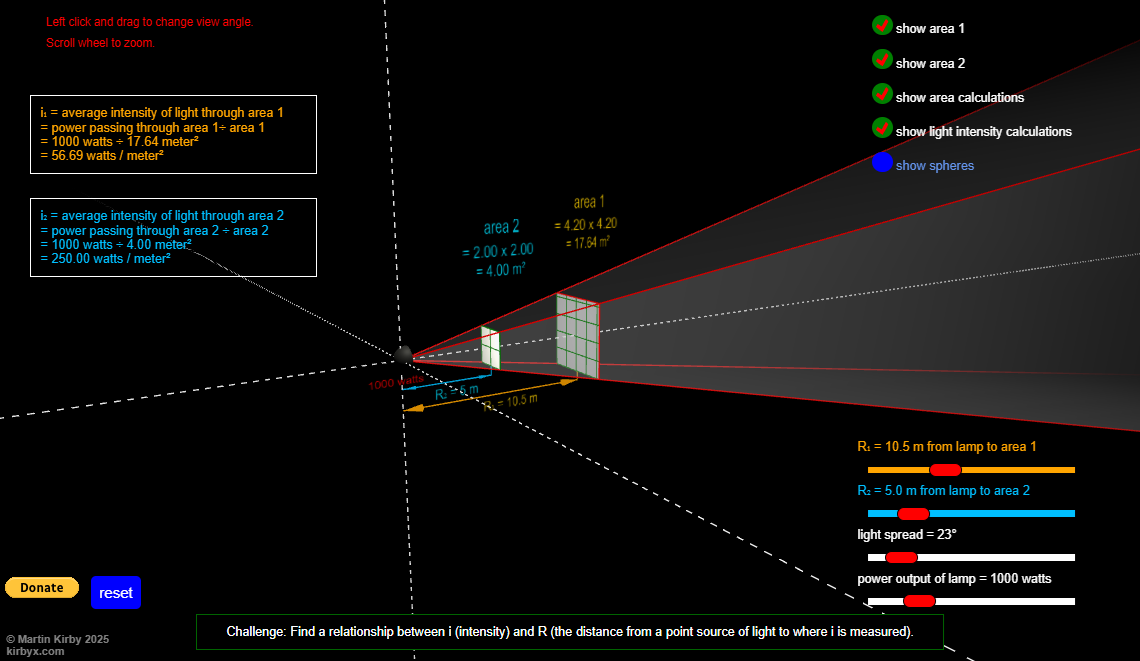Interactive - Vibrations and Waves
Study the motion of waves on a string and the effect of tension, density and damping upon their behavior with the Slinky Lab Interactive. Create standing waves and investigate their patterns with the Standing Wave Maker Interactive.
Activities
Pick up a mass and place it on the end of a spring and watch the mass bob up and down. Pull it off the spring and try placing a different mass on the end of the spring. Or use both springs and place different masses on each one of them. Ready to measure? Just click the Start button and the height of the mass, the velocity at which it is moving, and the time will all be measured and plotted on a graph. Values go by too fast? No problem with this Interactive - just drag a slider backwards across the graph and view height, velocity and time values at any point on the graph. As if that were not enough, you can also change the nature of the spring - changing both its stiffness and the amount of damping. This simulation is so realistic it is almost as if you are manipulating the real thing.
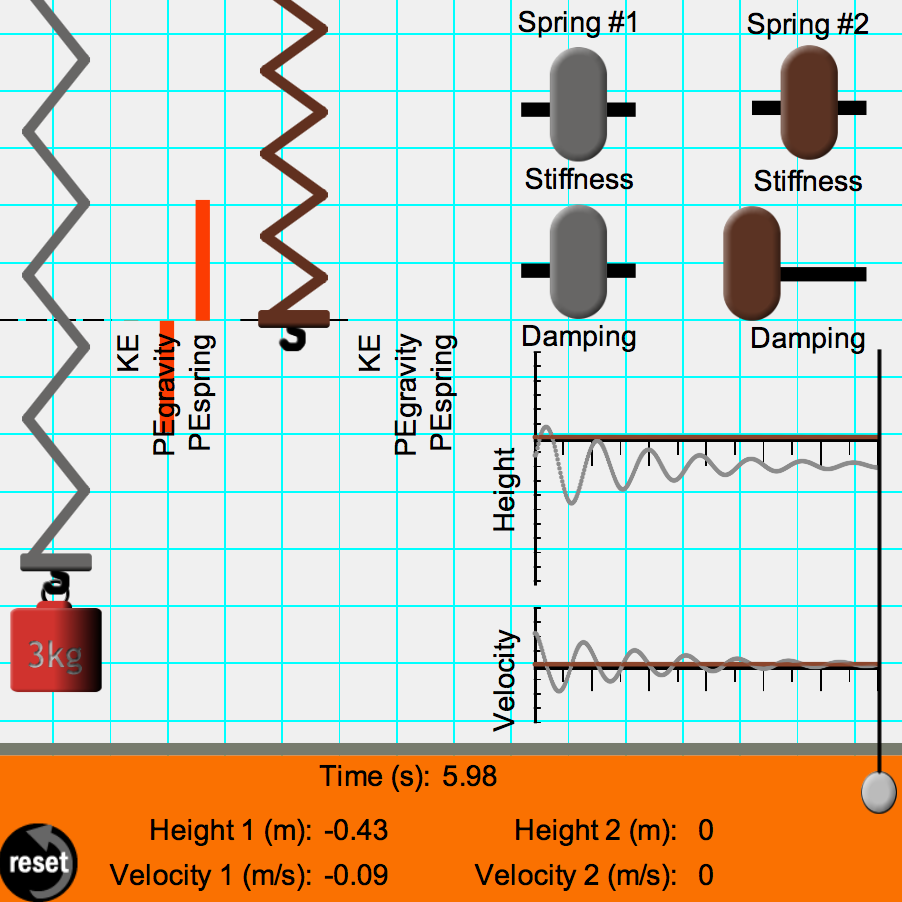
It's the often-dreaded vibrating mass on a vertical spring problem. But this time your results will be different. This Interactive will incrementally step you through the problem with hints and feedback.
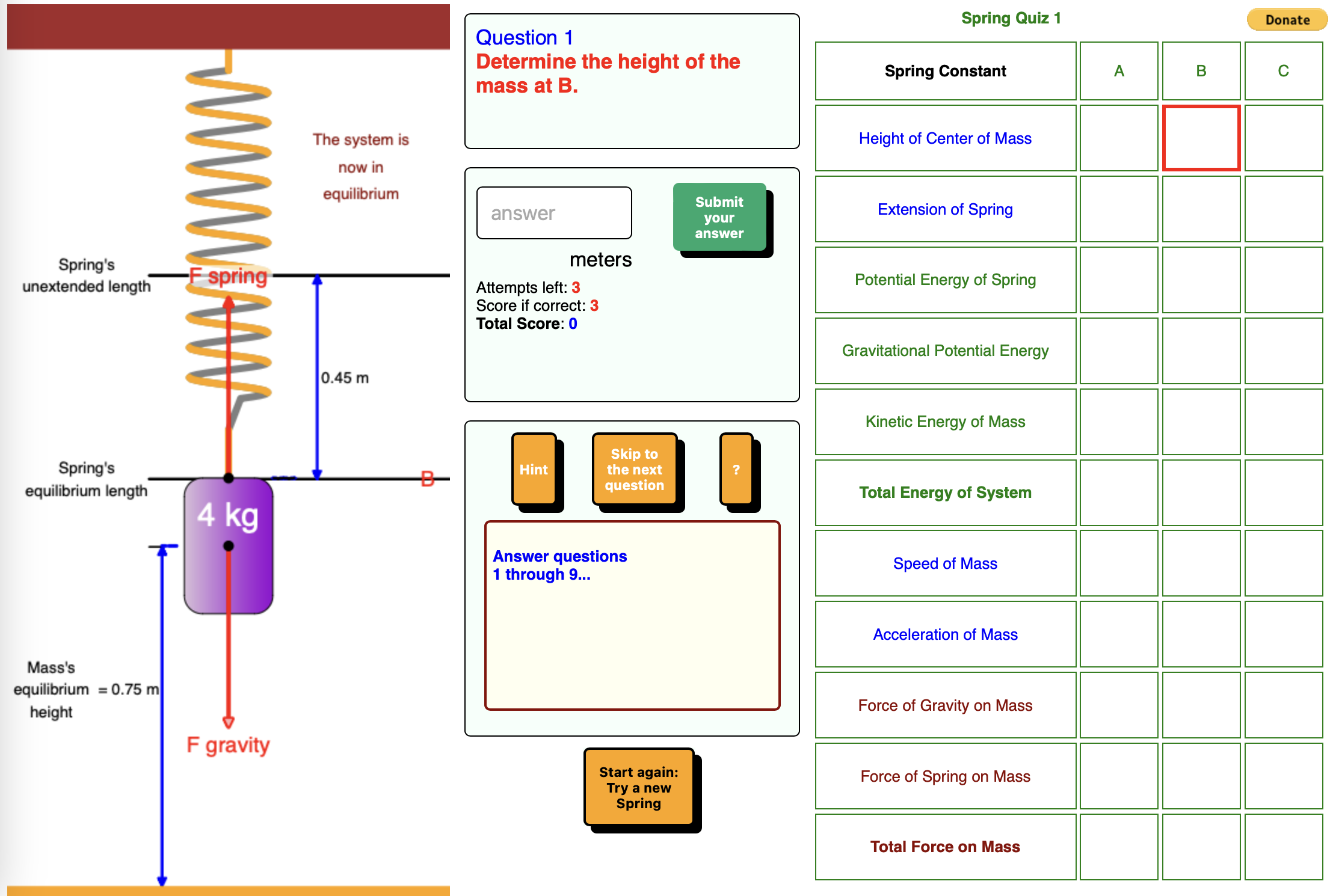
Get 60 particles together. Connect them by springs. Vibrate the first one back and forth at a regular rate. What do you get? You might be surprised but you're going to have to visit the simulation to find out. The Particle Wave simulation allows you to explore the nature and properties of a wave. Properties such as wavelength, amplitude, and speed can be changes. The effects of the change on the wave pattern and particle motion can be immediately observed.
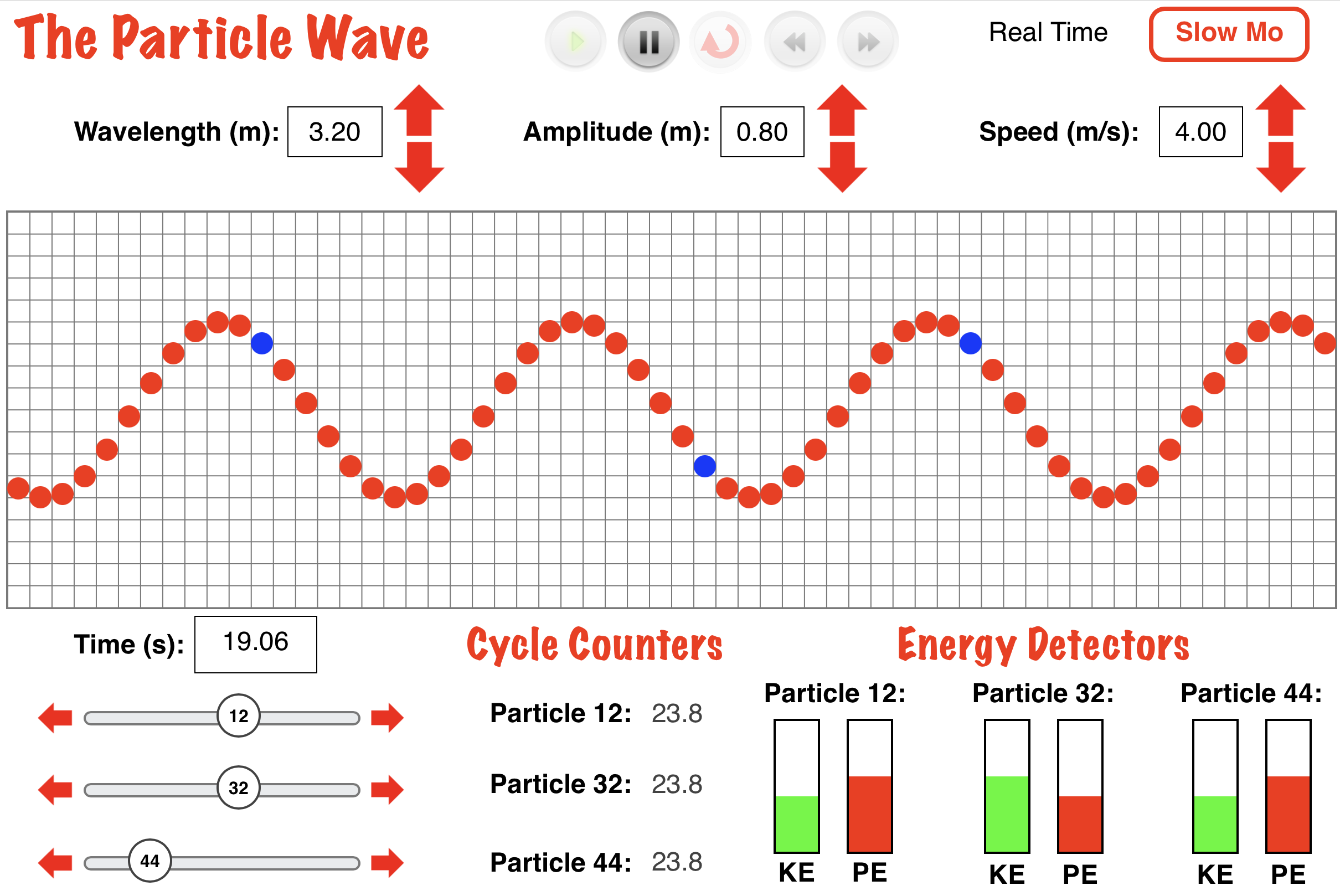
You could try to rig this contraption up at school but it would probably be a bit difficult. So we did it for you and added some 3D viewing effects to give it more realism. It's a marker attached to a turntable. The marker oscillates back-and-forth one complete cycle as the turntable makes one complete revolution. Underneath the marker is a long spool of butcher paper that moves as the marker oscillates back and forth and leaves a trace on the butcher paper. What are you going to see on the butcher paper? We're not going to tell you that part. You'll have to click the link and see for yourself. Almost forgot: don't forget to tap down and drag the contraption to view it in 3D. It's quite mesmerizing. You could probably spend the entire class period (English class, that is) playing with it.

Whether seen in a science museum or inside a physics classroom, everyone is intrigued by a wave machine. One can watch and observe the periodic motion of a mechanical wave machine in amazement without knowing that 30 minutes just passed by. Prepare yourself because you are about to observe a virtual wave machine ... only now you (not the museum official or your teacher) are in control. You can set it vibrating at any frequency and any amplitude you wish. You can even view it simulating a sound wave. Watch it vibrate in slow motion. Watch it in fast motion. Watch it in real time. And watch the clock because you're going to be so captivated that you might be late for your next class.
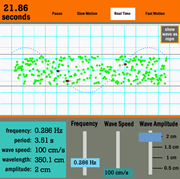
When a wave reaches the end of a medium, it doesn't just stop. But what does it do? In this simulation, you are certain to find out. View an incident, reflected, and transmitted pulse and observe how their speed, wavelength, and amplitude is dependent upon the density of the medium. It's like having a wave machine on your screen ... but you can take your time, repeat a trial, and easily investigate the answer to what happens when a wave reaches the emd of a medium.
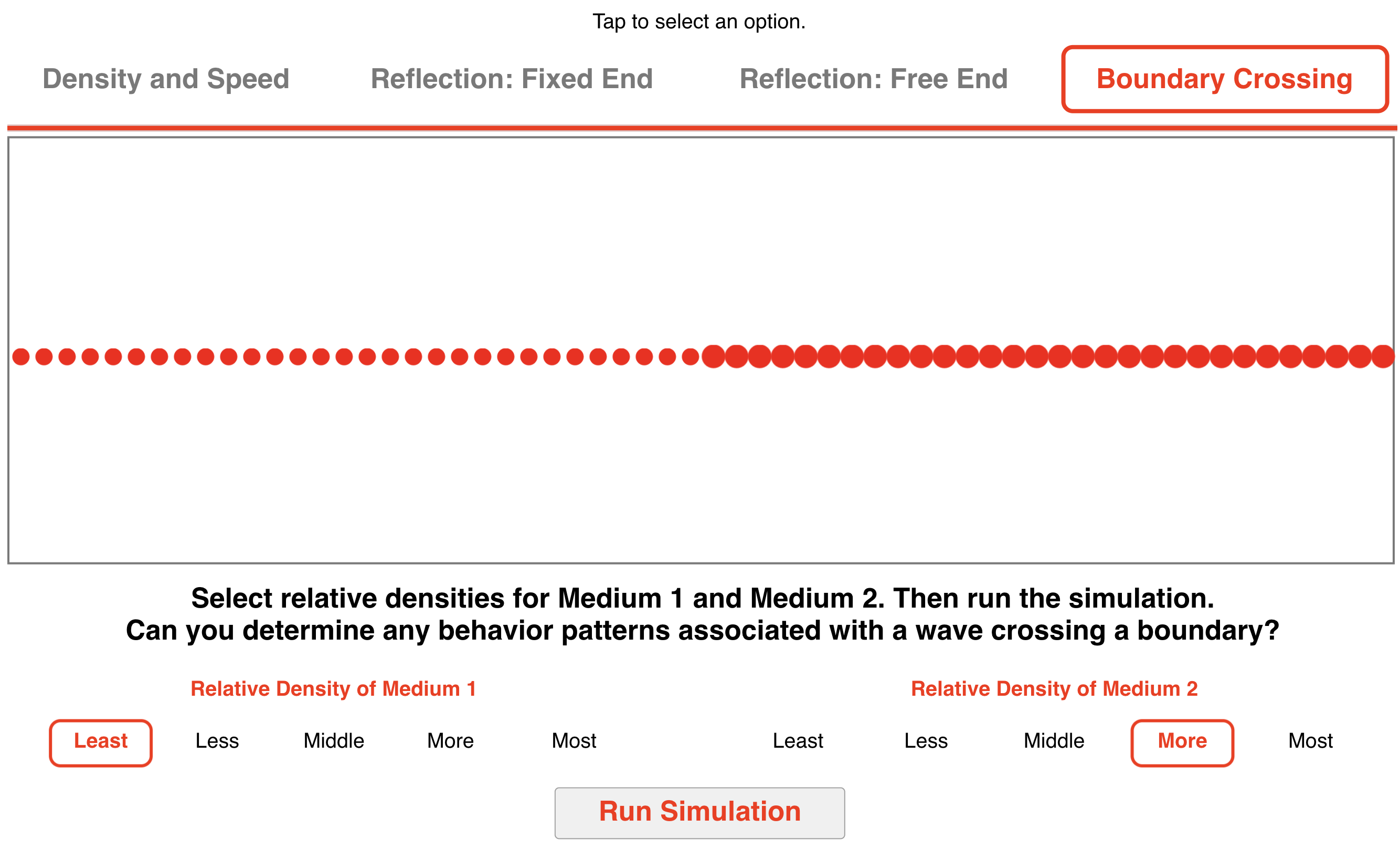
Grab a particle on a string and start wiggling it back and forth. Watch as the disturbance you create travels from particle to particle. Explore the result of wiggling more or less frequently or with a smaller or larger amplitude. Change the amount of damping effects and other variables. You'll have so much fun with Slinky Lab that you might forget that you're learning physics.
The Physics Classroom would like to thank Nerd Island Studios for contributing this Interactive to our collection.
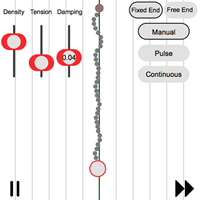
When two or more waves meet up with each other while moving through the same medium, interference occurs. When you try to observe this phenomenon in real life, the two waves become lost in one another and it becomes difficult to perceive the principles that underlie the phenomenon. But this simulation comes to the rescue, allowing the learner to step through in slow motion and view the individual waves and the resulting shape of the medium. So drop that Slinky for a moment; you can get back to it later. But for now, take some time to explore the Wave Addition simulation and find out what is happening when you and your friend give each end a shake.
Thanks to Physics teacher Martin Kirby for contributing this simulation to our Physics Interactives collection. You can learn more about the Wave Addition simulation at Mr. Kirby's Google Site.
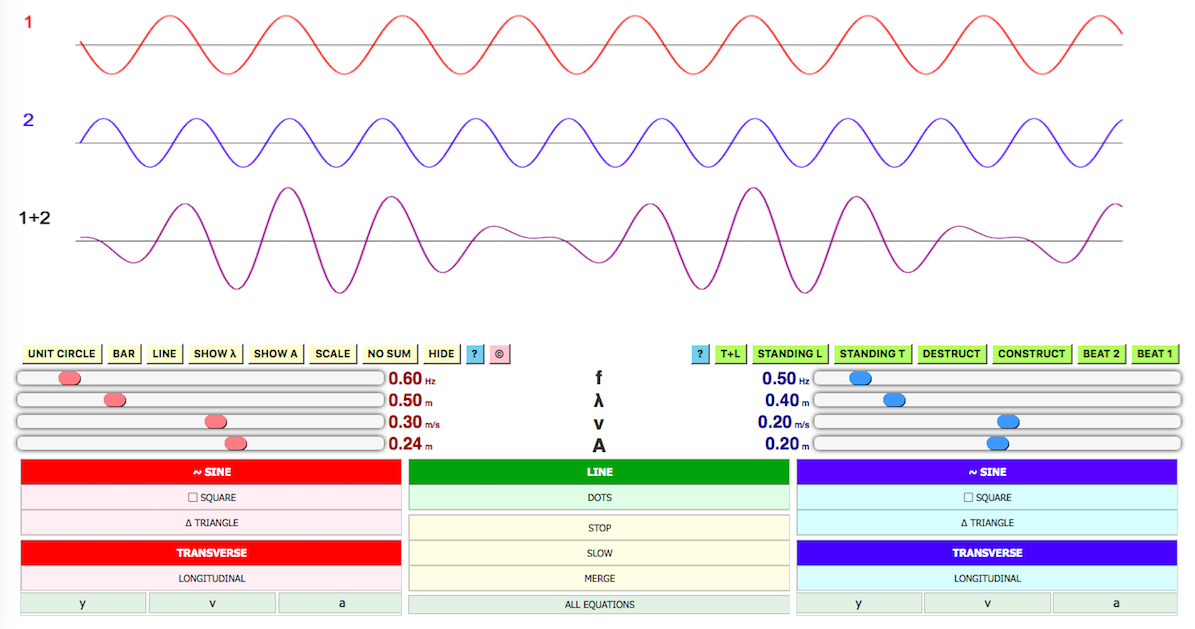
If you have ever seen a standing wave demonstration, then you have seen the definition of groovy (excuse the 80s term). And groovy is what you will see when you open this simulation. Make standing waves from several pre-set conditions or set the conditions yourself. View two waves traveling in opposite directions and the standing wave pattern that results from their interference. Don't forget to say Groovy!
The Physics Classroom would like to thank Nerd Island Studios for contributing this Interactive to our collection.
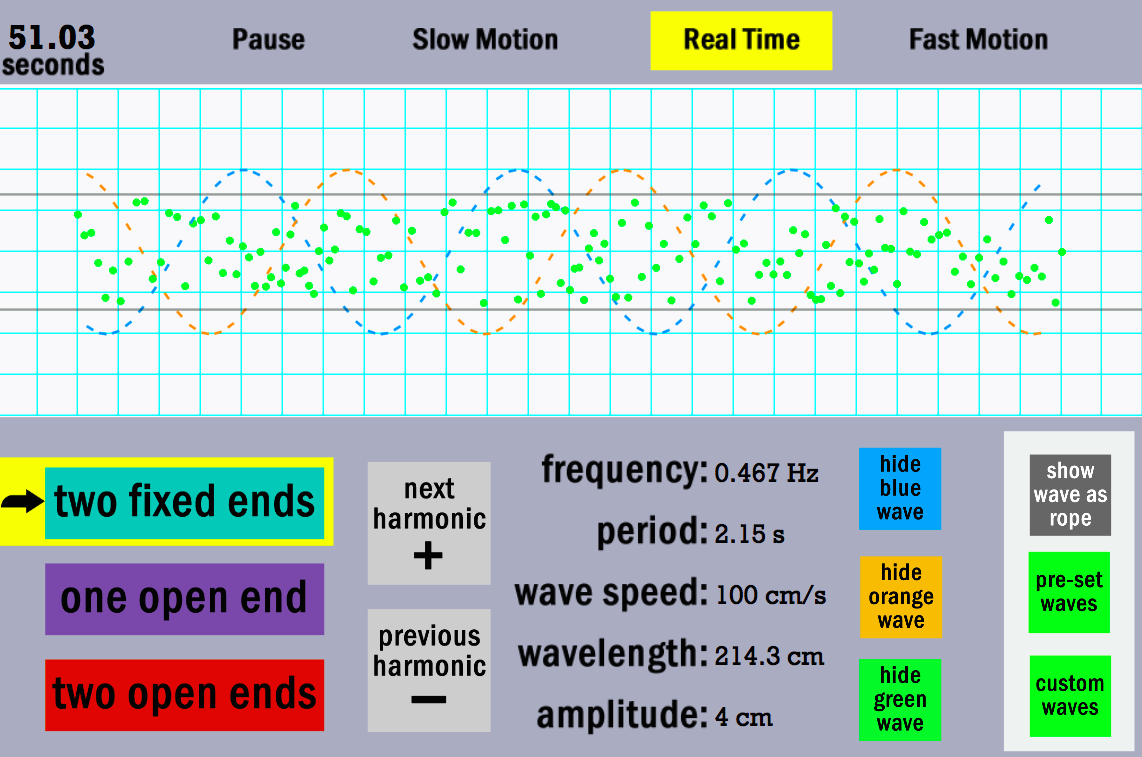
Explore the motion of a ball on a string moving in a vertical circle. Attach it to a light string, to a light, rigid rod, or simply allow it to roll along the wall of a vertical loop. Change a variable and observe its impact upon other quantities. Explore on your own or use The Physics Classroom's student-friendly exercise.
Thanks to Physics teacher Martin Kirby for contributing this simulation to our Physics Interactives collection. You can learn more about the Vertical Circle Simulation (Pendulum Motion) simulation at Mr. Kirby's Google Site.
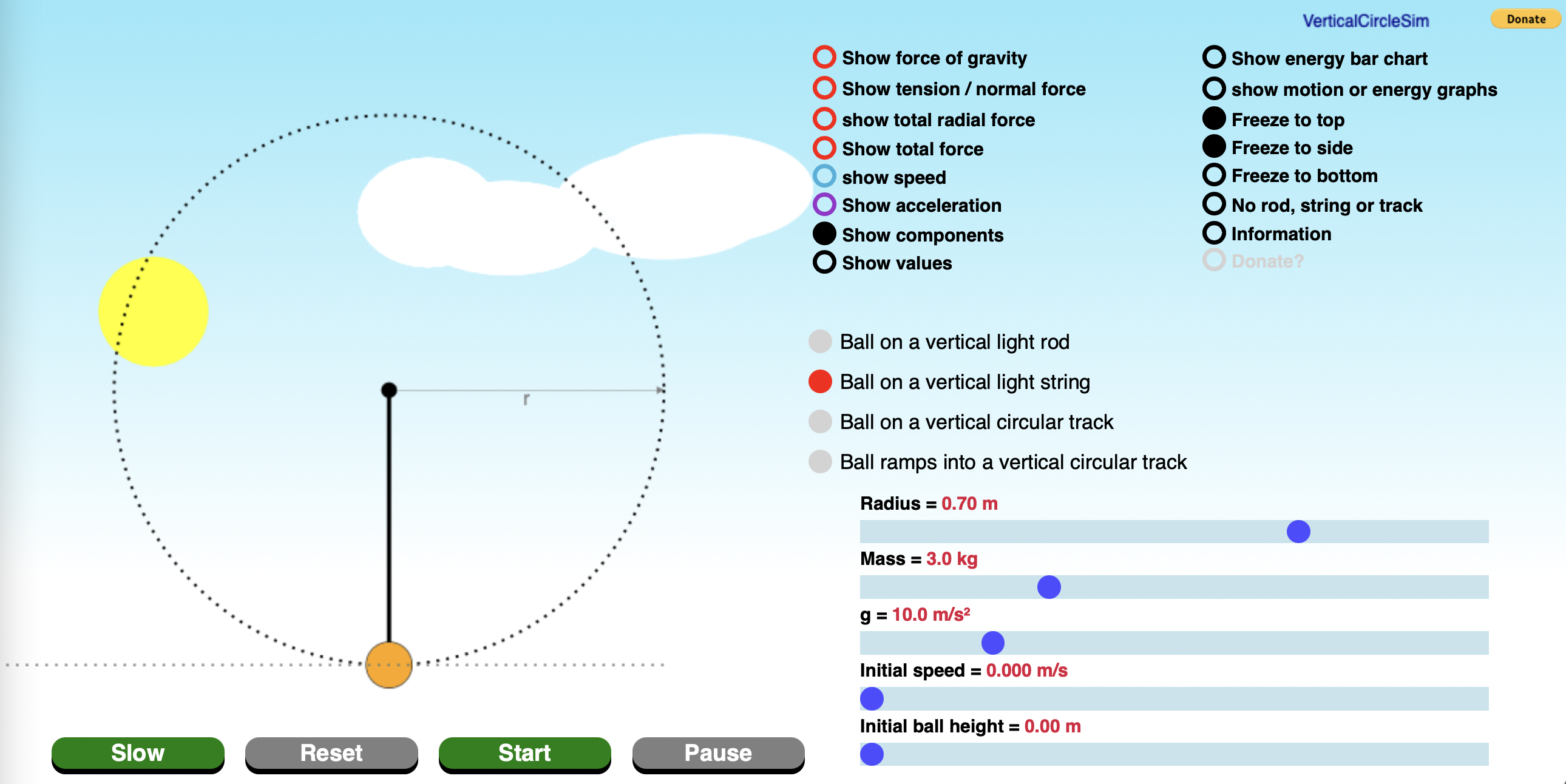
This simulation is intense! See how the Inverse Square Law helps determine the intensity of physical quantity in relationship to distance. Although this simulation uses light, the inverse square law has applications in many areas of physics, such as sound, gravity, radiation, and more!
Thanks to Physics teacher Martin Kirby for contributing this simulation to our Physics Interactives collection. You can learn more about the Inverse Square Law Sim simulation at Mr. Kirby's Google Site.
